15 Photographers On Their Greatest Journeys
A journey implies a traversing a terrain, but photographs can also travel in time, transporting us to a distant past or an imagined future. Pictures can bring someone home, or closer to understanding themselves. Over the past sixty-five and seventy years, respectively, Aperture and Magnum photographers have demonstrated how photography moves across geography, time, space, and lives, both real and imagined.
This week, for five days only, get signed and estate stamped, museum quality, 6-by-6-inch prints by acclaimed Aperture and Magnum photographers for $100 each. Use this link to make your purchase and a proceed from each sale will support Aperture Foundation.

Jacob Aue Sobol, A boy does a somersault and lands in a deep pile of snow, Tiilerilaaq, Greenland, 2001
©the artist/Magnum Photos
Jacob Aue Sobol
“I still recall my journeys to the East Coast of Greenland as the greatest and most fearless ones of my life. I was only twenty-three when I took this picture of a six-year-old boy jumping off the roof, making a summersault, and landing in a pile of snow. To me it became an image not only about the strength and courage of the children in this village, but also about what was happening inside myself. I had fallen in love with a local woman and [had] decided to live with her family to be trained as a hunter and a fisherman by the Inuits. I had started a new life, a new journey that made me feel exactly like that boy jumping off the roof.” —Jacob Aue Sobol
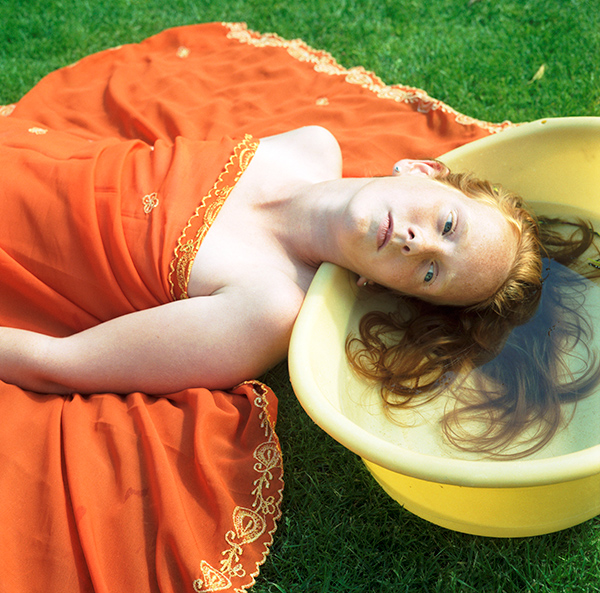
Hellen van Meene, Untitled, 1999
© the artist
Hellen van Meene
“The subjects of my photographs are at the cusp between childhood and adulthood. The girl here radiates a sense of ambiguity, of vulnerability, of soul-searching; it is in this fleeting in-between state of dramatic physical and emotional change, that these qualities become more visible. I’m interested in the tension between her teenage sweetness and awkwardness, made all the more palpable by her pose, and the contrasts between the textures. While this portrait shows a transitory moment of life, it is also timeless—a reminder that we are all in a state of change on life’s journey.” —Hellen van Meene

Todd Hido, Untitled, #2154-a, 1998
© the artist
Todd Hido
“This particular photo has a special meaning to me, even though it hadn’t been published in my House Hunting series, where I explored the Bay Area suburbs at night. After the completion of a body of work, I will often find things that didn’t get published because there was certain hyper sense of uniformity that I was looking for when I was making my initial choices. However, once you are able to gain some space and time to reflect, gems like this emerge and you scratch your head and ask, why haven’t I used this one before?” —Todd Hido
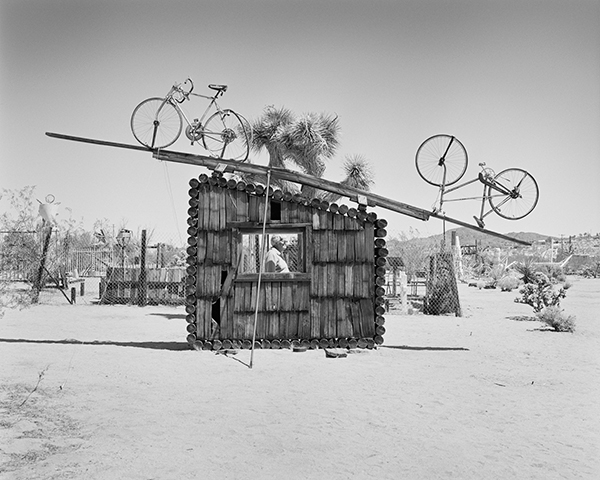
LaToya Ruby Frazier, Pat Brunty, the caretaker, standing behind No Contest (1994). Noah Purifoy Outdoor Desert Art Museum, Joshua Tree, California, 2016
© the artist
LaToya Ruby Frazier
“I took a pilgrimage out in the Mojave Desert with sculptor/installation artist Abigail DeVille to pay homage and respects to our ancestor and predecessor, artist Noah Purifoy. Born in Alabama in 1917, Noah Purifoy, after serving in World War II, spent most of his adult life in Los Angeles as an artist, activist, and educator. In 1989, he relocated near Blair Lane in Joshua Tree, High Desert. For the last fifteen years of his life, Purifoy created nearly 120 sculptures, before he passed away at eighty-six on March 5, 2004. The caretaker of Noah Purifoy’s Desert Art Museum, Pat Brunty, a resident of Yucca Valley and also an Alabama native, worked closely with Noah during the final years of his life. She and her late husband Roger Brunty, under supervision of Noah, built his theater, Andrea’s Little Theater, in 2000. Pat is a passionate and dedicated caretaker of Noah’s work and is serious about maintaining the sculptures as he last saw them, from picking up trash to removing vandalism and greeting visitors. She believes visitors should encounter Noah’s works with an open mind of interpretation.” —LaToya Ruby Frazier

Olivia Bee, Pre-Kiss, 2010
© the artist
Olivia Bee
“This is part of my series, and book with Aperture, Kids in Love. It focuses on your internal universe expanding into the outside world, and experiencing things for the first time. They are real moments of my life that I treat with love and respect.” —Olivia Bee

Kwame Brathwaite, Bob Marley, Beacon Theatre, 1976
© the artist
Kwame Brathwaite
“I was backstage at Madison Square Garden when I first met Bob. We started talking about Marcus Garvey and Haile Selassie. He was a great storyteller. He had purpose. He talked about Rasta culture and knew a great deal about the African diaspora and the liberation struggles all over the world. Later, we spent time at his house on Hope Road in Kingston. He was great to be around and made everyone feel at home. His poetry and his music are still relevant today. He was a great voice for empowerment and freedom, and he was a friend.” —Kwame Brathwaite

Jamel Shabazz, A Time Before Crack, 1983
© the artist
Jamel Shabazz
“As the dark clouds of crack cocaine slowly casted [sic] their destructive shadows over America during the early 1980s, I saw the urgent need to take to the streets as a concerned citizen and documentarian. Already, a number of young men I knew personally were dying at the hands of other young men I also knew. I felt it was my duty both to warn the youth of the dangers that I foresaw, and to use my camera as a tool to engage and document. Anticipating more death and destruction, I found that photography was the key that allowed me entry into the lives of young people. I would venture out to the local high schools and shopping districts throughout the New York City area, searching for young people to speak to about this growing crisis. To my surprise, almost everyone seemed open to exchange thoughts and afterward stand for a portrait. Those images, in fact, became evidence of the countless exchanges I would have; many new friendships were also forged as a result of these interactions. In making these often-posed portraits, I wanted to capture a spirit of friendship and love. Today, these images serve as a constant reminder of a time before the great crack epidemic that would change life forever.” —Jamel Shabazz
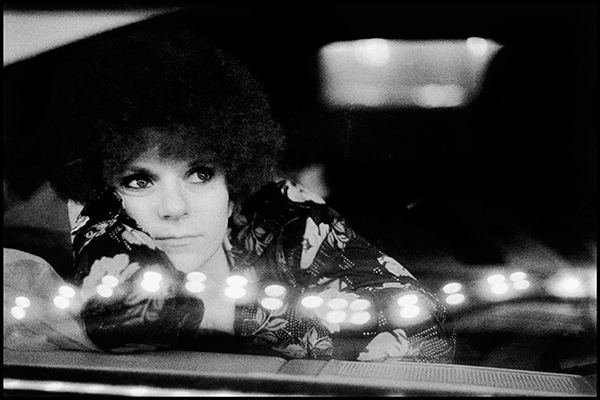
Susan Meiselas, Shortie’s Dream, Barton, Vermont, 1974
©the artist/Magnum Photos
Susan Meiselas
“The dream of the road: the place to escape, to wander, to encounter something beyond what you had imagined you’d find. That’s what led Shortie to leave home to strip in the Girl Show. We intersected while traveling through New England. Journeys are physical and emotional disruptions that involve both body and mind. For me, this journey also meant finding a new path. I followed the carnivals with the desire to make images and share the words of women whose working lives forced them to make extremely difficult choices to launch their dreams.” —Susan Meiselas
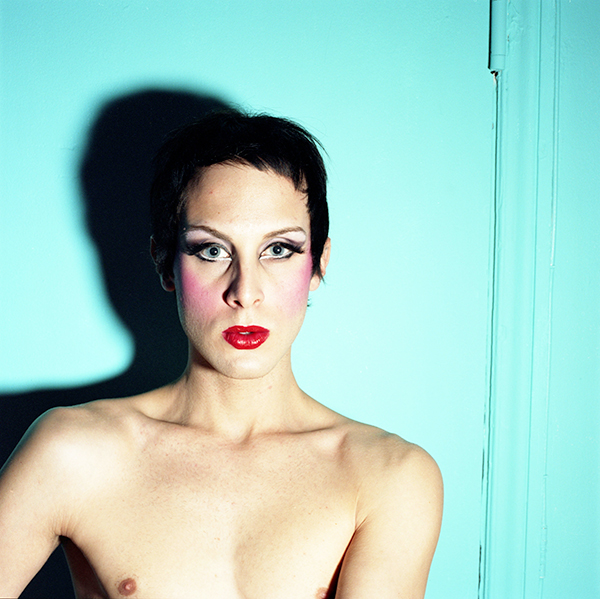
Zackary Drucker & Rhys Ernst, Relationship, #12, 2008–13
© the artists
Zackary Drucker
“Before the prevalence of selfies, or the square files of Instagram, I photographed myself into existence to fill the void of feeling that gender outlaws had been erased or only rendered by outsiders. I don’t particularly like this self-portrait, but I acknowledge this past incarnation who exists within me, and honor them for delivering me here and now.” —Zackary Drucker
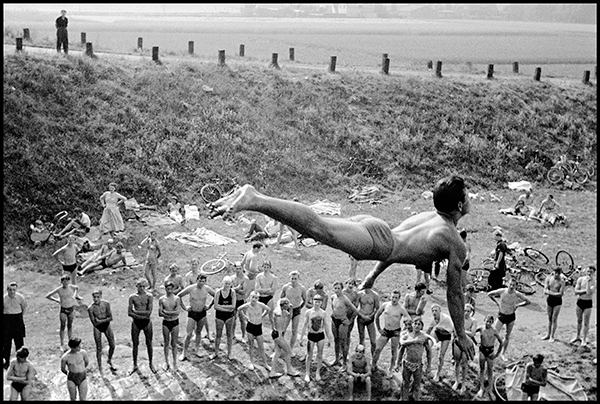
Leonard Freed, Divers on the banks of a canal near Dortmund, Dortmund, West Germany, 1965 ©the artist/Magnum Photos
Leonard Freed
“As a young photographer in the 1950s, Leonard left New York City for post-war Europe. He found devastated European nations that were in the process of rebuilding themselves. When in Rome, he met, and later married, a German woman. Together they would photograph Germans in Germany for the next ten years, creating two photobooks: Deutsche Juden heute (1965) and Made in Germany (1970).” —Elke Susannah Freed
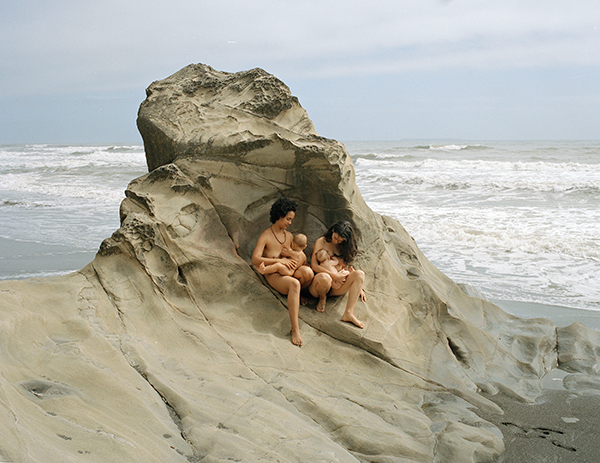
Justine Kurland, Sea Stack, Double Mama, Ruby Beach, Washington, 2006, from the series, Of Woman Born
© the artist
Justine Kurland
“After the birth of my son, Casper, in 2004, I began a series of photographs that juxtapose radical representations of motherhood with idealized views of the American West. The project was titled after Adrienne Rich’s seminal feminist text, Of Woman Born: Motherhood as Experience and Institution (1976), in which she analyzes the patriarchal construct of motherhood and discusses why it is such a problematic topic for many feminists. While some theorists would prefer to do away with the body altogether, Rich envisions a new rubric in which the libidinal value of ‘tits and ass’ is replaced by the uterus and clitoris, and women are positioned as the arbiters of their own bodies. This series was my attempt to visualize what that shift might look like—women and children wandering in blissful togetherness through the social space of shared landscapes. I made them mostly for myself during my first years with a small baby, because I couldn’t relate to the depictions of motherhood available to me. These photographs opened up space for me to imagine a different way of being a mother.” —Justine Kurland
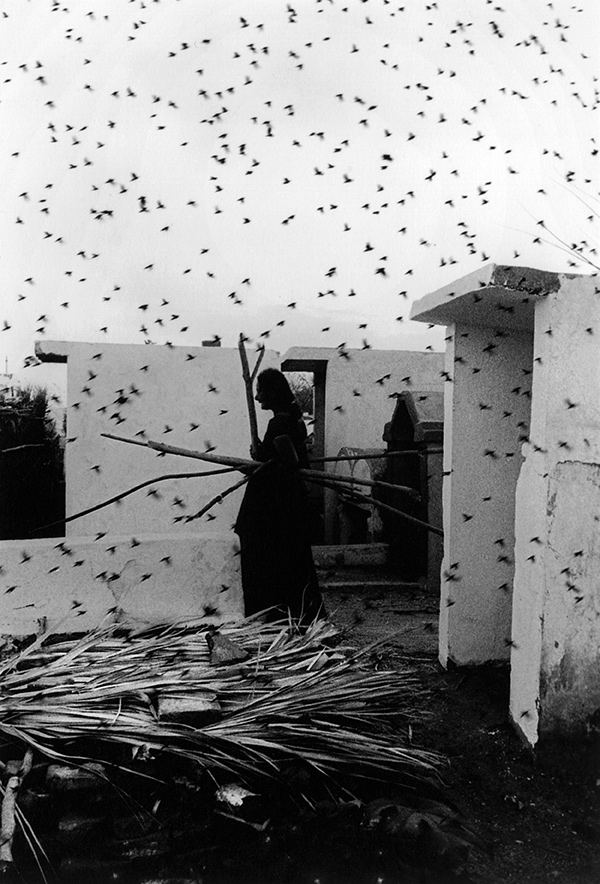
Graciela Iturbide, Cemetery, Juchitán, Mexico, 1988
© the artist
Graciela Iturbide
“Midway between the documentary and the poetic, my unusual way of looking through the lens integrates what has been experienced and what has been dreamt, into a complex web of historical, social and cultural references. The fragility of ancestral traditions and their difficult survival, the interaction between nature and culture, the importance of ritual in everyday body language and the symbolic dimension of landscapes and randomly found objects are paramount to my career. My work is characterized by an ongoing dialogue between images, time and symbols, in a poetic display in which dream, ritual, religion, travel and community all blend together.” —Graciela Iturbide
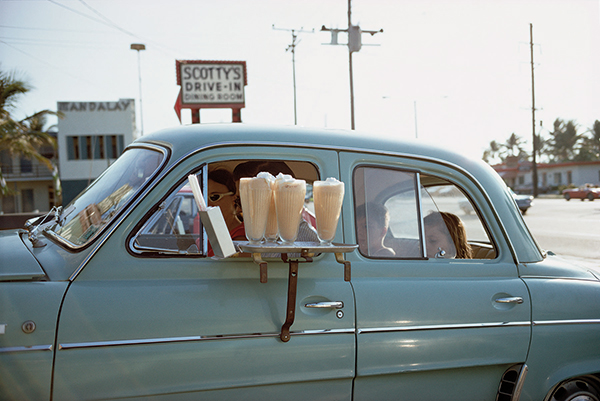
Joel Meyerowitz, Scotty’s Drive in, Florida, 1967
© the artist
Joel Meyerowitz
“Here’s Scotty’s. Sometimes when you’re traveling in the car all day, on the lookout for life on the fly, a great thirst comes over you and that desire for the next event evaporates immediately upon seeing an old-fashioned diner, I mean the real thing, not some dolled-up imitation serving prepackaged crap, but a place where some degree of reverence for the past lets you know that a milkshake from childhood can be found there. And here’s Scotty’s. Mmmmmm.”—Joel Meyerowitz

Enri Canaj, Korçë, Albania, February 2015
© the artist/Magnum Photos
Enri Canaj
“This is from a journey backward, to my own homeland, to what I have kept in my memory, what I have forgotten, what I grew up away from. All of it slowly melting together into a light crystal snow ball, that I keep safe with me. To keep me safe.” —Enri Canaj

Jérôme Sessini, Caracas, Venezuela, May 27, 2013
©the artist/Magnum Photos
Jérôme Sessini
“For most people, travel is synonymous with vacation, exoticism and relaxation. Or flight, to escape the quotidian. I understood by traveling, that there was no trip far enough to escape from oneself. Elsewhere becomes here when we are there.” —Jérôme Sessini
Support Aperture today through the Magnum Square Print Sale in Partnership with Aperture, open online October 30–November 3, 2016.























